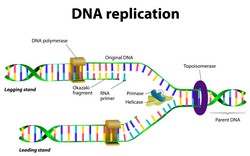Revisiting DNA replication
DNA replication is a fundamental process in the life of a cell. Any errors could prove catastrophic, resulting in life-threatening diseases like cancer. DNA associates with histones into chromatin, which contributes towards genomic integrity but chromatin limits the accessibility to DNA. This affects DNA replication, gene expression and DNA repair. Interestingly, previous research in yeast had underscored the importance of the chromatin environment and chromatin modifications in the activation of replication origins. In addition, it had shown that origins of replication are nucleosome free and that the position of the adjacent nucleosome is important for origin function. Undoubtedly, there are enzymes known for their capacity to remodel chromatin but it is unclear how these enzymes interact with the replication machinery and influence DNA replication. The goal of the EU-funded DNA REPLICATION (In vitro reconstitution of the replication machinery on a chromatin template) project was to investigate the mechanism by which DNA replication initiates and determine how this replication machinery elongates on chromatin. In this context, scientists developed an in vitro system that allowed them to recapitulate the reconstitution of helicase loading and replication initiation on a chromatin template. Project results indicated that chromatin was beneficial for the binding of the origin-recognition complex (ORC), a multi-subunit DNA binding complex that recognises the origins of replication. In addition, ORC seemed to play a crucial role for the precise deposition of nucleosomes around the origin of replication. Furthermore, scientists observed that a minimal replisome was insufficient to evict nucleosomes in front of the replication fork. Collectively, study findings provided important insight into the temporal regulation of DNA replication. Equally importantly, the generated in vitro system will help study DNA replication in detail, greatly impacting cancer research.







